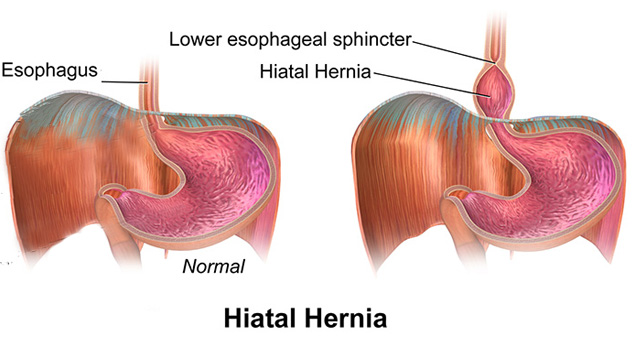
ANTI-REFLUX SURGERY (Laparoscopic Fundoplication and Hiatal Hernia repair)
Gastroesophageal reflux disease (GERD) is common condition which occurs when stomach acid refluxes up into the esophagus (food pipe).
The main symptom of stomach acid reflux is heartburn. This is characterised by a burning-type pain and pressure behind the breastbone, in the centre of the chest. Other symptoms include nausea, regurgitation of food (when a stomach content rise back up the esophagus and into the mouth), bitter or sour taste in the mouth, sore throat, trouble swallowing, chest pain, dry cough and abnormal voice changes.
There are two main problems that predispose patients to GERD including:
- Weakened esophageal muscle – the lower esophageal sphincter may have become weakened.
- Presence of a Hiatal hernia, which is when part of the stomach moves into the chest through the diaphragm (a thin dome-shaped muscular sheet that separates the chest from the abdomen). A hiatal hernia by itself does not usually result in clinical symptoms unless it is very large. However, the presence of the hernia tends to weaken the anti-reflux barrier and allows for acid reflux to occur more easily. Patients with very large hiatal hernias (where one-half of stomach or more is in the chest) are typically unresponsive to currently available medical therapy and usually require surgery to correct the problem.
Surgical therapy is targeted towards correction of the above-mentioned underlying problems. The surgeon is able to correct a hiatal hernia by replacing the stomach into the correct position within the abdomen. Furthermore, to strengthen the lower esophageal sphincter and prevent acid reflux from occurring, the surgeon can perform a procedure called fundoplication by wrapping the top part of the stomach (the fundus) around the lower part of the esophagus.
If indicated, both procedures can be done at the same time. Dr Mastakov will use laparoscopic (keyhole) surgery, using very small incisions. Patients commonly spend 1 to 2 days in the hospital after the surgery and 2–4 weeks at home recovering.
The ideal candidate for anti-reflux surgery should respond well to medical therapy for heartburn. Patients with a poor response to medical therapy and patients with are atypical symptoms of GERD (asthma or asthma-like symptoms, persistent cough, or laryngitis) typically more likely to have a poor surgical outcome. The main reason for this is that these patients may have problems besides GERD that are unresponsive to treatment.
Further Reading:
https://www.betterhealth.vic.gov.au/health/ConditionsAndTreatments/indigestion
http://ales.amegroups.com/article/view/5371/html
https://www.healthdirect.gov.au/surgery/laparoscopic-nissen-fundoplication
Zacheri J, et al. Endoscopic anterior fundoplication with the Medigus Ultrasonic Surgical Endostapler (MUSE™) for gastroesophageal reflux disease: Six-month results from a multi-center prospective trial. Surgical Endoscopy. 2015;29:220.
